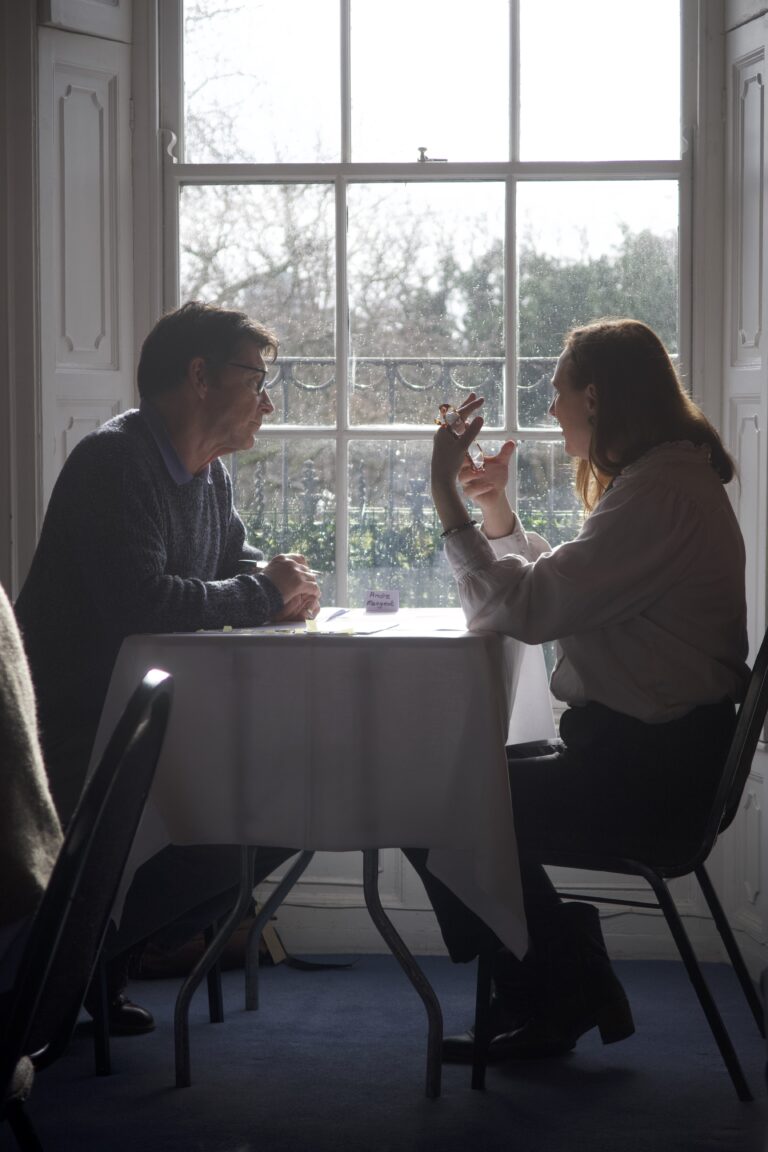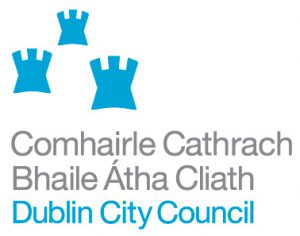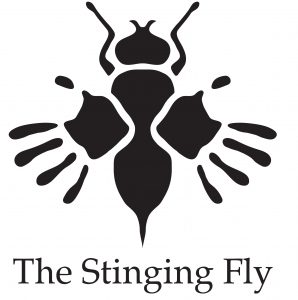
18 August, 2025
How To Write A Synopsis
As submissions come flying in for our International Debut Novel Competition, the Irish Writers Centre and previous International Debut Novel Competition winner, Lauren Mackenzie, are here to demystify the application process for first-time novelists. As part of your submission to the Competition, you will be asked to craft a 500-word synopsis of your novel. Below, Lauren Mackenzie offers a helpful step-by-step process for creating your synopsis:
After months, years, centuries of toil, hope and despair, you produce 90,000 odd words in an act of tremendous faith and miraculous creativity and someone wants you to squish it into 300-500 words. What? Why can’t they just read the book?
Well.
First things first. What is a synopsis? A synopsis is a short summary or description of a manuscript focusing on character, setting, plot and tone and almost everyone wants one.
A synopsis has a number of functions —
- It’s a selling document. As a crucial element of a querying package, it demonstrates your ability to tell a story. The synopsis brings the premise to life, demonstrating the story’s appeal.
- They’re often requested with novel excerpts for courses and workshops, funding bodies, and competitions like the IWC International Debut Novel Competition.
- A synopsis is a reference tool for anyone in the business engaging with the book – an editor or marketing team, (e.g., to help with remembering details especially when people are dealing with many books at once.)
- A useful editorial tool. A synopsis will expose any weakness in your story telling, whether in character, structure or emotional truth.
To write a synopsis you need to know your story, the bricks and mortar. And know what the reader needs to understand your story.
Stepping back: Loglines and Pitches
To reduce a 90k novel to 500 words means stripping it of all your startling metaphors, your sensual imagery, the inner thoughts of your compelling, conflicted characters and much of your wit. You simply haven’t got the space.
You need to step right back. You want to see the forest not the trees.
A synopsis of 300-500 words is much easier to write if you’ve considered your logline and pitch.
A logline encapsulates your story in one sentence containing the main character/s, the setting and the central conflict. Sometimes called the elevator pitch, it’s what you’d respond if asked what is your book about in a situation where there’s no time to elaborate. You want to ‘hook’ the listener in.
The pitch is usually two or three paragraphs, sells the story, the characters, the struggle, in active, emotive language. A pitch mentions genre and tone – exciting or emotional for example and offers comparisons with other titles or authors. Unlike a synopsis, a pitch withholds the ending. Pitches can be delivered in writing or presented verbally. (This is what you would prepare for publishers and agents if you’re a finalist in the Irish Writers Centre International Debut Novel Competition.)
So, What’s the Story?
Where are we?
Time and place – the setting can be geographical, or social like a workplace or school, a different era, a specific season.
Who is the story about?
Often a main character but could be an ensemble of characters united by a goal, or a place, or by age, for example.
What happens and why?
What’s the problem or disruption in their lives and what do they do about it?
How does it end?
How is the character/s or the world changed? And if not, why not?
Why do we care?
What’s at stake? Why does the story matter? Stakes do not have to be life or death, but they need to matter to the characters we’re following.
In screenwriting, they talk about the logline as a distillation of somebody wants something badly and is having a hard time getting it.
Not all stories fit this model by any means, but it helps to be conscious of what readers expect of narratives – character/s in a place and time reaching for something that is important to them and coming up against an obstacle of some kind – internal, external, social, environmental.
Find your logline. A single sentence – X wants Y because, but it is difficult because of Z. Pay attention to the opposing values in your story. They may reflect the story more succinctly. For example — starving peasants revolt against a brutal regime, but without allies they face certain death, or an urban family relocates to the country in hope of a quiet life but find old ways die hard.
Write a long list of alternative loglines, until you find one that feels just right.
Writing the Synopsis
Tell your story in the simplest terms. Set the clock for five minutes, write and don’t look back. You can’t include everything; there’s no time for subplots and colourful secondary characters. Write the version you’d tell someone you’ve just met.
Using the first pass as a reference write three paragraphs – one each for beginning, middle, and end, and no more than 300 words total*.
- Where we are and when (if it’s not contemporary), your main character/s, who they are, what the problem is, what they want to do about it and why.
- What the character does to achieve their want. Two or three events. Do they succeed or fail?
- The climax of the story, the aftermath and resolution indicating how things have changed for the character/s and the world.
When choosing what to keep and what to cut – if the character or the plot point is necessary for the ending to make sense, keep them, if not, cut from the synopsis.
A proviso — if your structure is not linear, reflect the structure in the synopsis. If, for example, your novel starts with a death and then jumps back forty years to explore the reasons why, then your synopsis starts with a death and jumps back. If your story has a major reveal or reversal in the middle, don’t give it away in the first paragraph.
*It’s worth refining this 300-word version as some situations require a shorter synopsis.
The Fun Bit
Once you have three paragraphs that reflect your story in a way you’re happy with, then use your next 200 words to elaborate on character, emotion, atmosphere and tone. Use vivid emotional language, we need to know how and why things matter – what’s at stake.
Aim to reflect the tone and atmosphere of the manuscript in this pass, making sure to highlight what is surprising or unique — the elements that mean most to you.
Making it Good
The synopsis, like a query letter, is an essential element of your calling card. You want it to read well. And no typos.
Use clear and concise language. Tell the story, you’ve no time to show.
Use third person, present tense (even if the story is told in 1st person)
Avoid passive language. She is running – she runs. She is giving a lecture – she lectures.
Use only as much backstory as needed to understand the story.
Offer brief introductions to characters when they appear – age and a critical trait which may be tied to the plot or serves to indicate the uniqueness of your character and situation.
No more than three named characters. After three use generic terms/functions – neighbour, doctor etc.
Know your genre and present your story accordingly.
Do not reference the qualities or mechanics of the novel, for example, in a startling twist, Margaret discovers… Do not say in lyrical prose or this is a compelling, original take. Even if it absolutely is. Do not indicate chapter breaks or parts one and two.
Now What to do if Your Book Just Doesn’t Fit the Above
Don’t panic. If your novel is experimental or explores many characters across various centuries and just won’t comply to these parameters you can, of course, find your own way. If your way into a synopsis reflects the style and ambition of the manuscript even better.
You could write a monologue in the voice of the character, or write a diary, or a letter. You could simply pen a declaration of intent elaborating on the how and why behind your choices. But beware, the novel itself will need to justify stepping outside the traditional lines.
Troubleshooting
Find a friend to read it, find several, make sure they’re not confused or bored, and better yet, that they’re engaged.
If you need a full paragraph at the end to explain the thematic repercussions of your novel’s climax then it’s worth looking at everything again. It may be that the ideas need to be set up more succinctly in the beginning, so the resolution is immediately felt and understood.
Perhaps there is no obvious transformational arc or one that is hard to articulate. Perhaps the stakes are murky. If there is time fix it in the novel but if there is not, fix it or fudge it in the synopsis and make notes for later.
Synopsis Presentation
12pt, single spacing, standard font.
Follow word count directives.
Main character names in CAPS or bold when first introduced (but this is not a fixed rule). Surnames or honorifics only add to word count.
It’s okay to write age in brackets, e.g. June (12.)
Some like to see a logline at the top of the synopsis. But if there is a query letter, logline and genre should be mentioned there.
Tips
Look up similar books to see how they’re described – on Amazon, by reviewers, on socials. Take what you need. Know where you sit on the shelf in the bookshop.
Read it aloud.
When editing change the font, print it out, read on a phone or a kindle. Making it strange encourages an objective read and is also a really good way to find typos.
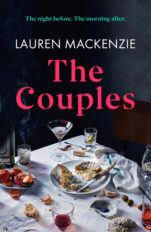
Lauren Mackenzie has extensive experience in both film and television as screenwriter, story editor and creative producer. Her work includes award winning drama series for RTE, TV3, TG4 and BBC. With the support of Arts Council Bursaries, her short fiction and poetry have been published in The Irish Times, Banshee, and The Stinging Fly among others. Her first novel, The Couples, a winner of 2021’s Novel Competition was published in 2023 with John Murray Press. She is currently finishing her second novel.
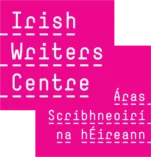 About the Irish Writers Centre
About the Irish Writers Centre
Founded in 1991, the Irish Writers Centre is Ireland’s leading resource and development organisation for writers. Its vision is to support the life of the writer, recognising the impact writers have in illuminating society with their ideas and words.
Through its Creative Writing Academy, the Centre delivers a year-round programme of over 150 creative writing courses, masterclasses and seminars, both online and in person. It also runs a National Mentoring Programme and administers a range of development opportunities for writers, including residencies, competitions and bursaries.
Operating on an all-island basis, the Irish Writers Centre is a membership organisation and a registered charity.
To become a member of the Irish Writers Centre, click here.


